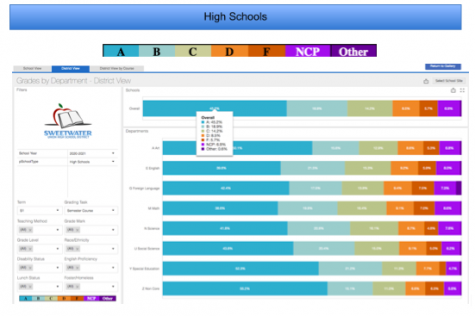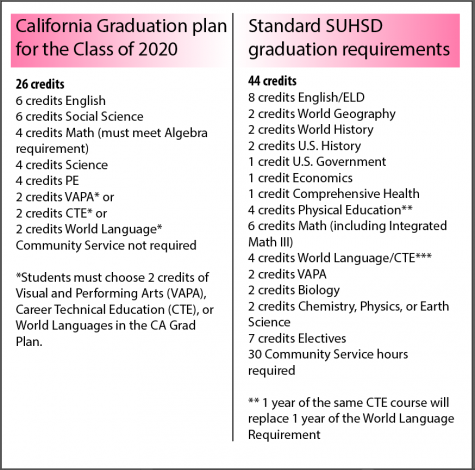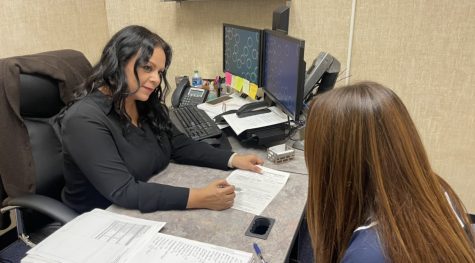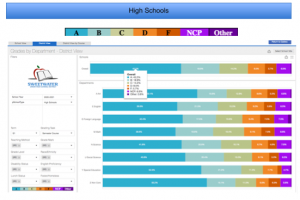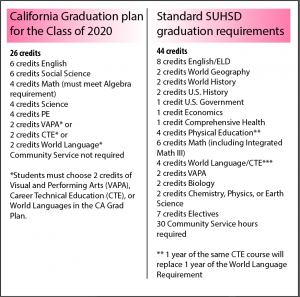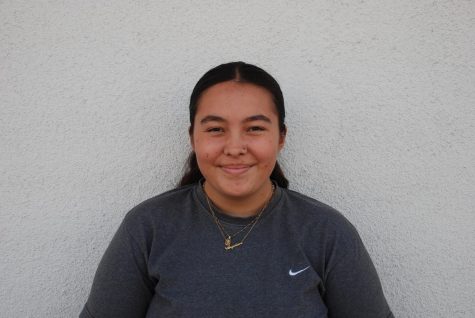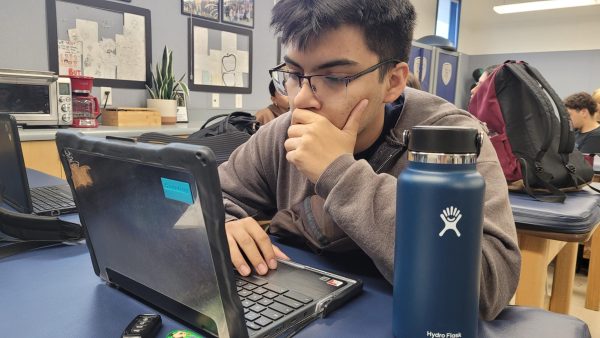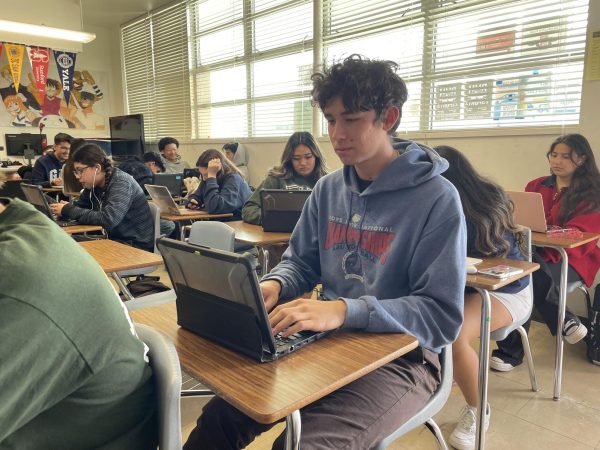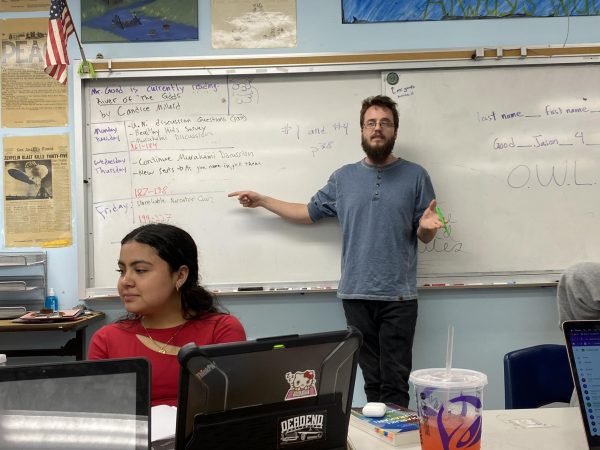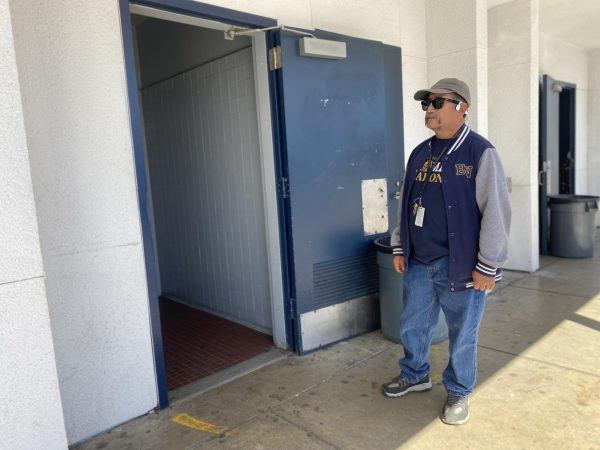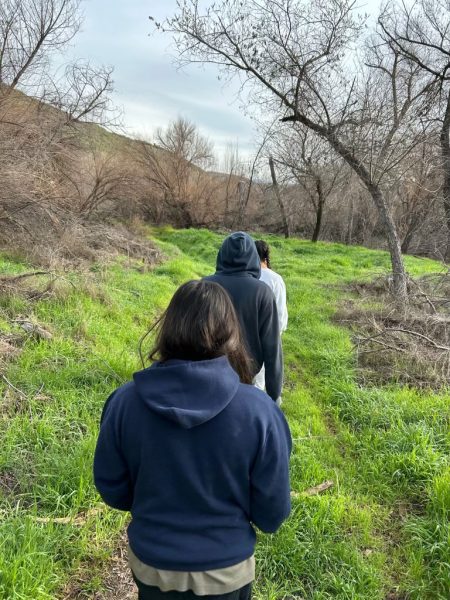Adapting to students’ future plans
A search for more flexible plans rather than A-G
A poll released by the Crusader reveals where students are in the process of completing their A-G graduation requirements and how they feel in terms of being on track to meet these requirements.
November 3, 2022
Counselors throughout the Sweetwater Union High School District (SUHSD) are constantly committed to setting students up for success and making sure they have a plan for the future once they graduate highschool. However, these standards they are expecting from students are solely based on the district’s well-known A-G requirements. Many students are familiar with the formal A-G graduation requirements, according to the Crusaders recent polls. A-G dictates what classes students take in order to graduate high school and sets them up for an easier admission into colleges such as San Diego State University (SDSU).
Bonita Vista High (BVH) counselor Olga Castro explains that BVH’s graduation requirements align with the A-G plan. She explains that in order for students to meet the A-G requirements, they must earn C’s or better grades in all their A-G coursework. Any students unable to do so must retake the courses that they received a D or F in.
“Our graduation and A-G requirements are aligned. As counselors, we prepare our students to meet all requirements,” Castro said. “It is up to the students to complete all requirements with good grades.”
Castro further explains that students are in control of their performance in their classes and are provided with ample support by their counselors. She comments that when there are students who receive a D or F in any of their A-G coursework they do not receive the proper amount of credits needed to graduate. This results in the student having to obtain the credits outside of the classroom.
“[Students] must retake this course in summer school, credit recovery, APEX online credit recovery, or retake the class during the school year. Counselors meet with students one-on-one to review their transcripts and credits, and inform students of classes they need to retake,” Castro said.
Many students, however, may not even be going to a university due to their own personal lives, so many students get punished for not meeting the A-G requirements, even though they may not apply to the students’ plans. Castro refused to talk about other plans–rather than the A-G requirements–that students may take to graduate high school when interviewed for this article.
Assistant Principal for the adult schools Sara Garcia-Salgado has been working at schools for 23 years to help people 18 and older who weren’t able to get their graduation certificate when they were in high school. She expresses some frustration when she sees students who come to her school that weren’t able to graduate because “they didn’t meet the A-G requirements” because as she explains, students should be able to graduate with the required credits as long as it fits their future needs.
“There’s at least a thousand [high school students] a year that don’t graduate. [So we focus on] how to get you back on track and help you get that degree because I think it’s just so ingrained to follow the A through G system to get into a university,” Garcia-Salgado said. “Some students are gonna get a job or follow a different career path after high school, so I’d like to see something that aligns with what the student would like to do.”
“I know that a four year university isn’t in the cards for everybody. Not everyone’s career choices or pathways necessarily require a four year degree. I just encourage students to have a plan, — Otay Ranch High counselor Carla Jacobo
Schools all over SUHSD follow the guidelines by the A-G plan. However, Otay Ranch High counselor Carla Jacobo explains how there is the California Graduation Plan (CGP) that is more flexible and solely is based on the requirements from the California Department of Education.
“For some students, if there were some challenges related to the pandemic, they also might have access to the California Graduation Plan. It simply just requires a minimum total of 44 credits to graduate and incorporates some of the A through G requirements,” Jacobo said. “But that’s something that a student would need to just check in with their counselor for an eligibility criteria because it’s very specific.”
With many students not being able to graduate on time, it leaves many current high school students unsettled. So with the CGP, it allows for students to feel more secure with their plans after high school, regardless if they are going to a university or not.
“I know that a four year university isn’t in the cards for everybody. Not everyone’s career choices or pathways necessarily require a four year degree. I just encourage students to have a plan, whether it’s going to the military, going to community college, going to a four year university or career technical education type program,” Jacobo said. “We wanna make sure that our students are prepared for when they graduate from high school.”


